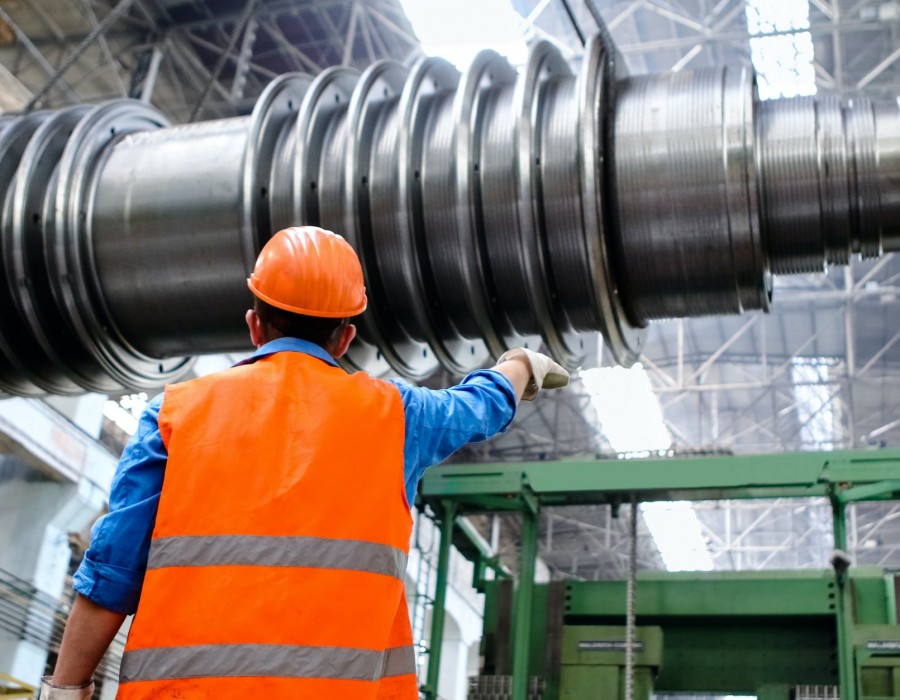Welded titanium tube
The evolution of modern superalloys has coincided with the evolution of the gas turbine engine for the aircraft industry. The rate of development of new alloys has been rapid and, in many respects, surpassed the development in companion joining techniques. Traditionally, emphasis in alloy development has been on high-temperature strength, stress rupture, and oxidation properties. Metal joining has been treated as a separate problem by welding and brazing engineers who were usually required to devise procedures and techniques to join each new alloy after it had been developed. This has resulted in exaggerated fabrication costs for some alloys because of unpredictable and uncontrolled metallurgical variations causing such problems as cracking during welding. Titanium is often preferred for aviation welded tube.
The welding of superalloys.
Despite many difficulties, welding has been and will continue to be one of the main fabrication techniques for aircraft and land-based engine components. Welding permits fabrication of economical size subcomponents with essentially no additional weight and at moderate cost. Welded joints cause relatively little reduction in service capabilities if they are placed in noncritical locations. The tolerances capable of being held on welded components are close if proper fixturing and welding techniques are used. Skilled welding allows the joining of welded titanium tube for pneumatics, air conditioning and water and waste systems on aircraft.
The main problem encountered in the welding of superalloys is cracking and fissuring. A crack is a large planar separation visible to the unaided eye. A fissure, on the other hand, is a small crack that is usually only detectable by metallographic examination. The prevention of defects is one of the most challenging problems in the welding of superalloys. Many superalloys, like the casting grades 713C and 131900, have such high fissuring sensitivity that it is impossible to make fissure-free fusion welds.
A second problem associated with welding of superalloys is reduction in mechanical properties. Generally, techniques can be used that do not cause a significant reduction in tensile or yield strengths; however, ductility of welded specimens is practically always reduced. This is because the structure of solidified weld metal is segregated and less ductile than an equivalent wrought structure. The segregation that occurs in solidified weld metal could also cause a reduction in oxidation resistance. If high-electron-vacancy elements segregated on solidification, they could cause embrittling phases to precipitate during welding or after being put in service. Each alloy must be examined individually to assess the degradation in properties that may result from welding. Postweld heat treatments can be helpful in reducing segregation, but effective heat treatments are often difficult to perform on large fabrications.
Regions in the heat-affected zone are exposed to high temperatures and can undergo exaggerated grain growth, solutioning, and reprecipitation of carbides and other precipitates. These changes may cause deterioration of properties, such as corrosion and oxidation resistance, and must also be evaluated individually.
Weld reinforcements, that is, weld overbeads and underbeads, must be avoided in situations where fatigue is the mode of failure. Fatigue strength reduction factors of 2.25-2.50 have been reported for weld underbeads. The best method for avoiding a fatigue problem is to put the weld joint in a low-stressed area.
WELDING PROCESSES
There are 45 distinct welding processes. In superalloy welding the most common are shieldedmetal arc, gas-tungsten arc, gas-metal arc, resistance, and electron beam. The purpose of these welding processes is to generate heat in a localized area and thereby cause melting and joining of two pieces of metal. Although processes differ significantly from each other, from an overview they are just different ways of generating localized heating.





Comments